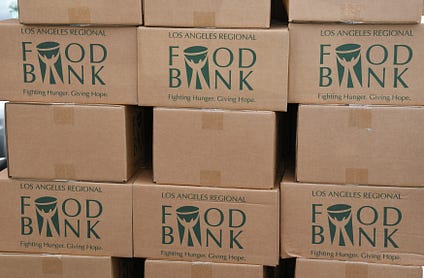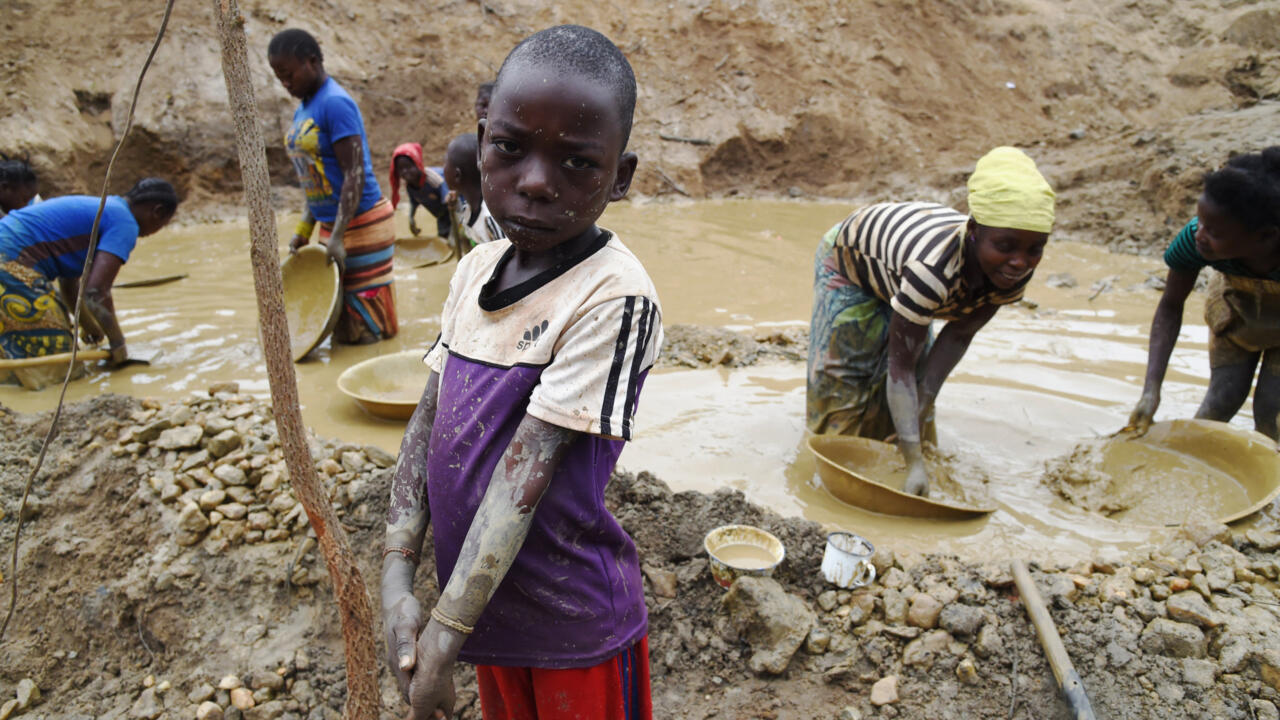Progress: The Lives Behind Reduced Poverty in Jamaica – The Borgen Project

Report on Jamaica’s Progress Towards Sustainable Development Goals
Executive Summary
In 2023, Jamaica achieved a historic reduction in its national poverty rate, which declined from 16.7% in 2022 to 8.2%. This represents the most significant decrease in over three decades and marks a substantial advancement toward achieving Sustainable Development Goal 1 (SDG 1: No Poverty). The progress is attributed to a confluence of factors, including robust economic recovery, targeted social interventions, and significant remittance inflows. These drivers align closely with broader development objectives, particularly SDG 8 (Decent Work and Economic Growth) and SDG 10 (Reduced Inequalities), demonstrating a comprehensive approach to national development.
Analysis of Poverty Reduction and SDG 1
Statistical Overview
The Planning Institute of Jamaica (PIOJ) reported a landmark achievement in the nation’s efforts to combat poverty. Key statistics underscore this progress:
- The national poverty rate was nearly halved, falling from 16.7% to 8.2% between 2022 and 2023.
- This constitutes the steepest single-year decline since official record-keeping began in 1989.
- This achievement directly addresses the primary target of SDG 1, which aims to eradicate extreme poverty in all its forms.
Key Contributing Factors
The reduction in poverty was driven by several interconnected economic and social dynamics:
- Economic Recovery and Sectoral Growth: Post-pandemic recovery in key industries created employment and stimulated economic activity.
- Resurgence in Tourism: The revival of the tourism sector provided a significant boost to the national GDP and employment rates.
- Stable Inflow of Remittances: Financial support from citizens abroad provided a crucial safety net for households.
- Targeted Government Social Interventions: Social protection programs effectively supported the most vulnerable segments of the population.
Economic Growth as a Catalyst for SDG 8
Sector-Specific Contributions
Jamaica’s economic performance in 2023 was instrumental in creating the conditions for poverty reduction, directly supporting SDG 8 (Decent Work and Economic Growth).
- Tourism: The sector, contributing nearly 10% of GDP, saw over 4.1 million visitor arrivals, surpassing pre-pandemic levels and generating thousands of jobs in hospitality and related services.
- Agriculture and Construction: These sectors, which employ a large number of low- to middle-income workers, recorded significant growth, with agricultural output increasing by 3.5% and construction expanding by 5.9%.
The Role of Remittances
Remittances from Jamaicans abroad totaled $3.6 billion in 2023, serving as one of the country’s most stable income sources. These inflows provided a critical buffer against inflation for many families, enhancing household economic resilience and contributing to the objectives of both SDG 1 and SDG 10.
Social Impact and Progress on Human-Centric SDGs
Tangible Improvements in Well-being
The decline in the poverty rate has translated into measurable improvements in the quality of life for Jamaican families, reflecting progress across several human-centric SDGs.
- SDG 2 (Zero Hunger): Families reported better access to food.
- SDG 3 (Good Health and Well-being): Improved income facilitated greater access to healthcare services.
- SDG 4 (Quality Education): Parents experienced less financial strain in purchasing school supplies and could save for their children’s education.
Social Protection Systems
Government initiatives such as the Programme of Advancement Through Health and Education (PATH) have been vital. By supporting over 350,000 beneficiaries, including children and the elderly, the program serves as a key policy instrument for achieving SDG 1 and reducing socioeconomic disparities in line with SDG 10 (Reduced Inequalities).
Future Outlook: Risks and Strategies for Sustained Progress
Identified Risks to SDG Achievement
Despite the historic gains, several challenges threaten to reverse progress. Sustaining momentum requires addressing these risks proactively.
- Inflation: Although global inflation has decreased, its continued impact erodes the purchasing power of low-income households.
- Climate Change: Increased frequency of severe droughts and floods poses a significant threat to agriculture and rural livelihoods, jeopardizing progress on SDG 1, SDG 2, and SDG 13 (Climate Action).
Recommended Strategies for Resilience
To safeguard the progress made and ensure continued advancement toward the SDGs, the following strategies are recommended:
- Strengthen Social Protection: Continue to invest in and expand social safety nets like the PATH program to protect vulnerable populations from economic shocks.
- Promote Economic Diversification: Reduce reliance on tourism by fostering growth in emerging sectors such as renewable energy, technology, and creative industries to build a more resilient economy aligned with SDG 8.
- Enhance Data Collection: Invest in reliable and transparent data collection systems to effectively monitor progress, guide policy, and ensure accountability, a key component of SDG 17 (Partnerships for the Goals).
Conclusion
Jamaica’s record-breaking poverty reduction in 2023 is a significant achievement, demonstrating the positive outcomes of aligning economic recovery with targeted social policy. This success has advanced the nation’s progress on multiple Sustainable Development Goals, particularly SDG 1. However, the gains remain fragile. Sustained commitment to strengthening social protection, diversifying the economy, and addressing climate-related risks will be essential to ensure that this progress is not only maintained but built upon for a more equitable and resilient future for all Jamaicans.
Analysis of Sustainable Development Goals in the Article
1. Which SDGs are addressed or connected to the issues highlighted in the article?
The article on Jamaica’s poverty reduction connects to several Sustainable Development Goals (SDGs) by discussing economic, social, and environmental factors that influence the well-being of its population. The primary SDGs addressed are:
-
SDG 1: No Poverty
This is the central theme of the article. The entire text revolves around Jamaica’s “sharpest reduction in poverty in more than three decades,” detailing the fall in the national poverty rate and the government interventions like social protection systems designed to support the vulnerable.
-
SDG 8: Decent Work and Economic Growth
The article directly links poverty reduction to economic drivers. It highlights the role of a “broader economic recovery,” job creation through the resurgence of tourism, and growth in the agriculture and construction sectors. These elements are fundamental to achieving sustained and inclusive economic growth.
-
SDG 13: Climate Action
The article identifies climate change as a significant risk to the progress made. It explicitly mentions that “severe droughts and floods become more frequent,” threatening agriculture and rural livelihoods, which could lead to a reversal of the gains in poverty reduction.
-
SDG 17: Partnerships for the Goals
The article concludes by emphasizing a critical component for sustained progress: data. The call for “reliable and transparent data collection” to monitor progress and guide future strategies directly relates to the goal of strengthening the means of implementation, specifically in the area of data and monitoring.
2. What specific targets under those SDGs can be identified based on the article’s content?
Based on the details provided in the article, several specific SDG targets can be identified:
-
Target 1.2: By 2030, reduce at least by half the proportion of men, women and children of all ages living in poverty in all its dimensions according to national definitions.
The article’s main point is that Jamaica’s national poverty rate “fell from 16.7% in 2022 to 8.2% in 2023, a drop of nearly half.” This directly addresses the reduction of poverty as defined nationally.
-
Target 1.3: Implement nationally appropriate social protection systems and measures for all, including floors, and by 2030 achieve substantial coverage of the poor and the vulnerable.
The article mentions the need to strengthen “social protection systems such as the Programme of Advancement Through Health and Education (PATH), which supports more than 350,000 beneficiaries, including children and the elderly.” This is a clear example of a nationally implemented social protection system.
-
Target 8.1: Sustain per capita economic growth in accordance with national circumstances and, in particular, at least 7 per cent gross domestic product growth per annum in the least developed countries.
The article discusses Jamaica’s economic recovery and provides specific growth figures for key sectors, such as “agricultural output grew by 3.5%, while construction expanded by 5.9%,” contributing to overall economic momentum.
-
Target 8.9: By 2030, devise and implement policies to promote sustainable tourism that creates jobs and promotes local culture and products.
The article emphasizes the role of tourism, which “contributes nearly 10% of Jamaica’s GDP” and saw a strong resurgence with “more than 4.1 million visitors.” This sector is highlighted as a primary source of jobs for thousands in hotels, restaurants, and entertainment venues.
-
Target 13.1: Strengthen resilience and adaptive capacity to climate-related hazards and natural disasters in all countries.
The article points out that gains are fragile due to threats from climate change, such as “severe droughts and floods.” It implicitly calls for strengthening resilience by stating that if these challenges are not addressed, “poverty rates could rise again.”
-
Target 17.18: By 2020, enhance capacity-building support to developing countries… to increase significantly the availability of high-quality, timely and reliable data.
The article explicitly states that “reliable and transparent data collection… will be essential for monitoring progress and guiding Jamaica’s future strategies,” identifying a key challenge and a necessary step for sustainable development.
3. Are there any indicators mentioned or implied in the article that can be used to measure progress towards the identified targets?
The article provides several quantitative and qualitative indicators that can be used to measure progress towards the identified targets:
- Indicator for Target 1.2: The “national poverty rate.” The article provides precise data points: a reduction from 16.7% in 2022 to 8.2% in 2023. This corresponds to the official SDG indicator 1.2.1 (Proportion of population living below the national poverty line).
- Indicator for Target 1.3: The number of beneficiaries covered by social protection programs. The article states that the PATH program “supports more than 350,000 beneficiaries.” This serves as a measure for indicator 1.3.1 (Proportion of population covered by social protection floors/systems).
- Indicators for Target 8.1: Sector-specific economic growth rates. The article mentions that “agricultural output grew by 3.5%” and “construction expanded by 5.9%.” These figures are indicators of economic performance and productivity.
- Indicators for Target 8.9: The number of tourist arrivals and the sector’s contribution to GDP. The article specifies “more than 4.1 million visitors” arrived in 2023 and that tourism contributes “nearly 10% of Jamaica’s GDP.”
- Indicator for Target 13.1: The frequency and impact of climate-related hazards. While not providing a number, the article implies that monitoring the frequency of “severe droughts and floods” is a necessary indicator of climate risk to livelihoods and the economy.
- Indicator for Target 17.18: The availability of reliable national data. The article implies that the existence and quality of a “reliable and transparent data collection” system is the indicator for this target, which is currently a challenge that needs to be addressed.
4. Summary Table of SDGs, Targets, and Indicators
| SDGs | Targets | Indicators Identified in the Article |
|---|---|---|
| SDG 1: No Poverty | 1.2: Reduce at least by half the proportion of people living in poverty according to national definitions. | National poverty rate fell from 16.7% (2022) to 8.2% (2023). |
| 1.3: Implement nationally appropriate social protection systems. | The PATH program supports over 350,000 beneficiaries. | |
| SDG 8: Decent Work and Economic Growth | 8.1: Sustain per capita economic growth. | Agricultural output growth of 3.5%; Construction sector expansion of 5.9%. |
| 8.9: Promote sustainable tourism that creates jobs. | Over 4.1 million tourist arrivals; Tourism contributes nearly 10% of GDP. | |
| SDG 13: Climate Action | 13.1: Strengthen resilience and adaptive capacity to climate-related hazards. | Implied need to monitor the increasing frequency of severe droughts and floods. |
| SDG 17: Partnerships for the Goals | 17.18: Increase the availability of high-quality, timely and reliable data. | The stated need for “reliable and transparent data collection” to monitor progress. |
Source: borgenproject.org
What is Your Reaction?
 Like
0
Like
0
 Dislike
0
Dislike
0
 Love
0
Love
0
 Funny
0
Funny
0
 Angry
0
Angry
0
 Sad
0
Sad
0
 Wow
0
Wow
0















































/environment-climate-change-and-health-(ech)/water-sanitation-hygiene-and-health-(wsh)/landfill-tuvalu-36092.tmb-1200v.jpg?sfvrsn=5c21fe40_1#)


.jpg.webp?itok=0ZsAnae9#)

























